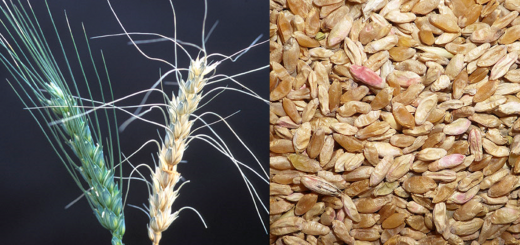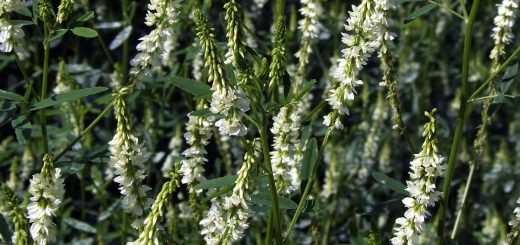#026: Pseudogymnoascus destructans
The fungus Pseudogymnoascus destructans is the causal agent of White-Nose Syndrome (WNS) of bats. WNS is most destructive to bats during the winter. Its primary effect on bats is to change their behavior during winter. Bats with WNS are observed to wake up frequently, fly around during the day, and cluster near the entrances to their hibernacula during the time that they should be hibernating. This extra activity kills bats in two ways. For one, they could either freeze to death while flying around outside. Alternatively, the extra activity could deplete their fat reserves and the bats could starve to death.
Many bats with WNS display a striking, white, fungal growth on their muzzles, ears, and/or wings. It was this feature of the disease that earned it the name White-Nose Syndrome. However, the fungus is not visible on all infected bats. The previously unknown fungus was identified as the cause of WNS and given the name Geomyces destructans (later it was moved to the genus Pseudogymnoascus). The fungus infects the bats’ skin. The hyphae invade the outer layer of the skin as well as hair follicles and associated pores and sweat glands. Once inside the follicles/pores, the fungus can penetrate the basement membrane of the skin and invade other local tissues. One reason that this fungus has been so successful is that it is psychrophilic (cold-loving). Bats choose caves and similar places as hibernacula, which tend to remain at a relatively constant, cold temperature all year (around 2 to 14oC). P. destructans thrives at temperatures between 5 and 10oC, meaning that it can grow year-round. I suspect the fact that the fungus itself does not kill the bats has also contributed to its success. This would allow the fungus to spread for the entire time that the bats are active without that time being cut short by its host dying. The fungus can infect a variety of hibernating bat species. Currently, seven bat species (two of which are endangered) are affected by WNS and the fungus has been found on another two.
WNS was first identified in a single cave in Schohaire County, New York, in February 2006. Since then, it has spread across all of the Appalachian Mountain states, from Maine to Alabama. WNS has also spread north into Canada and west as far as Missouri. P. destructans has also been found in Oklahoma, but WNS has not yet been detected there. In all, WNS has been confirmed in 23 U.S. states and 5 Canadian provinces, and the fungus (but not WNS) have been found in an additional 3 states. In the affected Eastern states, mortality rates in some hibernacula have reached 90 to 100%. WNS has resulted in the deaths of over 5.7 million bats since 2006 (an estimated 80% of the population). This is a big problem because bats are long-lived (around 20 years) and have only one pup per year. Even in the absence of infection, it will take a long time for bat populations to recover from such a population loss. This could have a variety of impacts, from more expensive farming to an increase in insect-borne diseases. Hopefully the cold-loving fungus will be unable to spread in the warmer states. The fungus is primarily spread from bat to bat, but it may also be spread from one cave to another by adventurous humans. To prevent the latter mode of transmission, many caves have been closed to humans. If you are planning on caving in WNS-infected areas, follow the decontamination procedures, linked below*.
See Further:
http://botit.botany.wisc.edu/toms_fungi/may2009.html
http://www.whitenosesyndrome.org/about-white-nose-syndrome
http://www.whitenosesyndrome.org/sites/default/files/resource/white-nose_fact_sheet_9-2012.pdf
http://www.nwhc.usgs.gov/disease_information/white-nose_syndrome/
http://www.sciencemag.org/content/323/5911/227.full.pdf?keytype=ref&siteid=sci&ijkey=cc%2FtHUAUCyxXc
* http://www.whitenosesyndrome.org/sites/default/files/resource/national_wns_revise_final_6.25.12.pdf









![#011: Characteristics of Kingdom Fungi [Archived]](https://www.fungusfactfriday.com/wp-content/themes/hueman/assets/front/img/thumb-small-empty.png)

5 Responses
[…] researchers have noted that SFD shares many similarities to White-Nose Syndrome (WNS, FFF#026) in bats. Both are emerging fungal diseases, both are centered in Eastern North America, both […]
[…] States have dropped dramatically in recent years because of the disease white-nose syndrome (WNS, FFF#???). Analysis of the population data suggests that some little brown bats have developed resistance to […]
[…] syndrome (WNS, FFF#026), a disease that has killed millions of bats across the eastern United States, has now been […]
[…] destructans and has caused massive die-offs of bats in the eastern United States (see FFF#026 for more). The disease is particularly deadly for hibernating bats, so non-hibernating bats like […]
[…] Pseudogymnoascus destructans, which causes the deadly bat disease White Nose Syndrome (WNS, see FFF#026), was discovered in South Dakota and Wyoming. Although no bats have been found with symptoms of […]